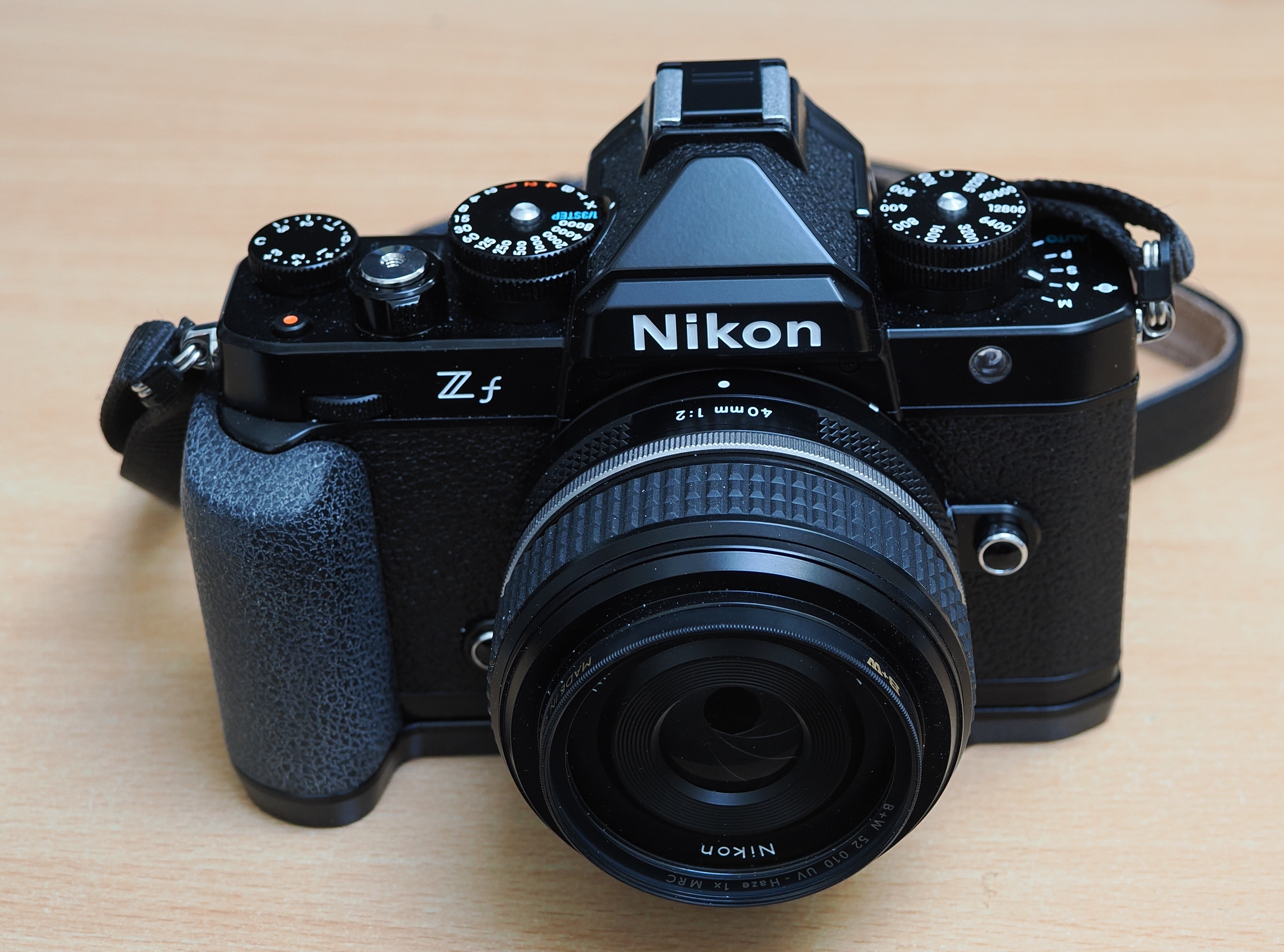At last - a Nikon that I can live with
I've had a love-hate (and mostly hate) relationship with Nikon cameras over the years. I keep falling into the trap of buying one, gulled by the reports of features and image quality, and by the FOMO sensation that with its huge market Nikon must be doing something right that I haven't noticed.
The relationship has never lasted though. Something about the user experience didn't gel with me. It was partly the size and weight; for a lover of small cameras (and having small hands) Nikon cameras have always been (literally) a bit of a burden. There were other niggles, such as the huge, over-complex menu system, and the weird counter-typical lens fitting. Why does Nikon have to do this the other way from (almost) everyone else?
After a recent and regretted dalliance with a D750 I convinced myself that I had bought my last Nikon. Never again. Which is how I came to be surprised to be the owner of a Nikon Zf.

Part of the attraction was the classic, film-era looks of the camera. I'm always a sucker for classic looks. Particularly when coupled with the 40mm SE lens, it is reminiscent of the Nikon FE that I owned years ago. The (relatively) compact size is also attractive, though it cannot be described as light, being extensively metal-built.
What works well with the Zf
The simple usability of this camera is its most attractive feature. I keep the 24-200mm lens more or less constantly fitted to the Zf, and this combination is easy to pick up and use for more or less any occasion. Considering its range, the lens is not too large or heavy, and my experience with it is reassuring from a quality point of view.
When switched on, the combination of controls and displays mean that you have all the information you need immediately available. It's not as "everything on the outside" as the Fujifilm X-T5, but it translates to an effortless user experience. I can't honestly say that about other Nikons that I've used.
The B&W switch is surprisingly useful. I do a lot of monochrome photography; having this so easily accessible is very nice. Once selected, you can choose between the different monochrome options easily via the i button. Speaking of which, the i button gives access to a quick menu reminiscent of the Fujifilm Q menu; it keeps my most commonly used access point to the Zf's functions easily to hand. I use it constantly.
Still, the most important controls are manual, on the outside and fall readily to hand. So I can both check and change the exposure mode, ISO, exposure compensation, photo mode (B&W, photo and video) and shutter speed, all from dials on the top plate.
The LCD is an articulating type; I like this, though I know a lot of people don't.
Like most decent cameras nowadays, the Zf is weather-proofed (not sure to what standard).
What don't I like?
I have only a couple of issues with this camera, and they're all quite minor.
It's a shame that there is no joystick. It's not in any way a deal-breaker, but it would be nice to have one.
The little LCD on the top plate seems just silly to me. I'm not sure if I've ever deliberately looked at it! Another custom button would have been better for me.
Another peculiar design choice on this camera is the use of a micro-SD card (UHS-I) as a second storage card (along with the more sensible full sized UHS-II card). In practice, I've just about forgotten about the small secondary card, so I treat the camera as if it has only one slot.
I've written elsewhere about fitting grips; basically, I used to do this on all of my cameras but have more or less stopped apart from cases where I'm going to use long lenses. The grip on the camera is quite small, so I've added the excellent Smallrig grip. Shame Nikon didn't provide one in the box.
This is a really minor picky point, but why does the auto option on the shutter speed dial read 1/3STEP? Why not just A like other sensible cameras? While I'm talking dials, the action of the shutter speed and ISO dials is a little... odd. The dials rotate freely apart from one spot (the aforementioned 1/3STEP and C settings respectively) where the dial locks. You need to hold the centre button down in order to move away from these spots. I think I would have preferred a straightforward lock/unlock function like on the X-T5 and OM-3.
The final word
I like this camera a lot. It looks good, feels good in my hand, and it has an excellent user experience. I've not been able to say as much about any other Nikon that I've owned. I don't (yet) have the same affection for it that I have for my Fujifilm and Olympus kit, but I suspect that I'll be keeping this one longer than previous Nikon cameras.